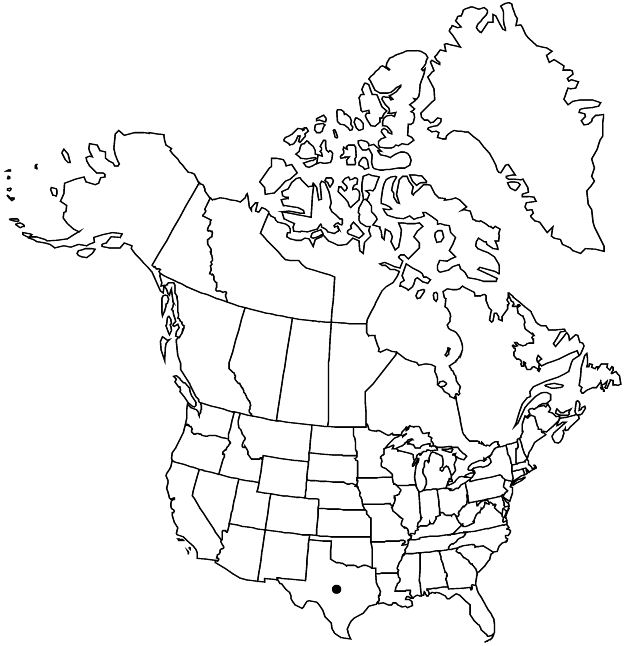Acalypha radians
Rep. U.S. Mex. Bound. 2(1): 200. 1859.
Herbs or subshrubs, perennial, 1.5–4 dm, dioecious. Stems prostrate to ascending, short-pubescent and hirsute. Leaves: petiole 0.4–1.6 cm; blade reniform or suborbiculate, 0.5–1.5 × 0.8–2 cm, base cordate or rounded, margins deeply crenate, apex rounded. Inflorescences unisexual, terminal (staminate and pistillate) and axillary (pistillate); staminate peduncle 0.5–3 cm, fertile portion 1–4 (–5) cm; pistillate peduncle 0.1–0.5 cm, fertile portion 1–2.5 × 0.8–1.2 cm; allomorphic pistillate flowers absent. Pistillate bracts crowded (inflorescence axis not visible between bracts), 7–10 × 12–16 mm, abaxial surface hirsute, sessile and stipitate-glandular; lobes (7–) 8–10 (–13), spatulate, 1/2 bract length. Pistillate flowers: pistil 3-carpellate; styles multifid or laciniate. Capsules smooth, pubescent and hirsute. Seeds 1.8–2 mm, minutely pitted.
Phenology: Flowering and fruiting spring–fall.
Habitat: Grassy openings, dunes, and oak or mesquite woodlands, usually on deep sand.
Elevation: 0–200 m.
Distribution

Tex., Mexico (Tamaulipas)
Discussion
Acalypha radians is found in the flora area from the Edwards Plateau south to the Mexican border.
Selected References
None.
Lower Taxa
"elongated" is not a number."connate" is not a number. "distinct" is not a number.